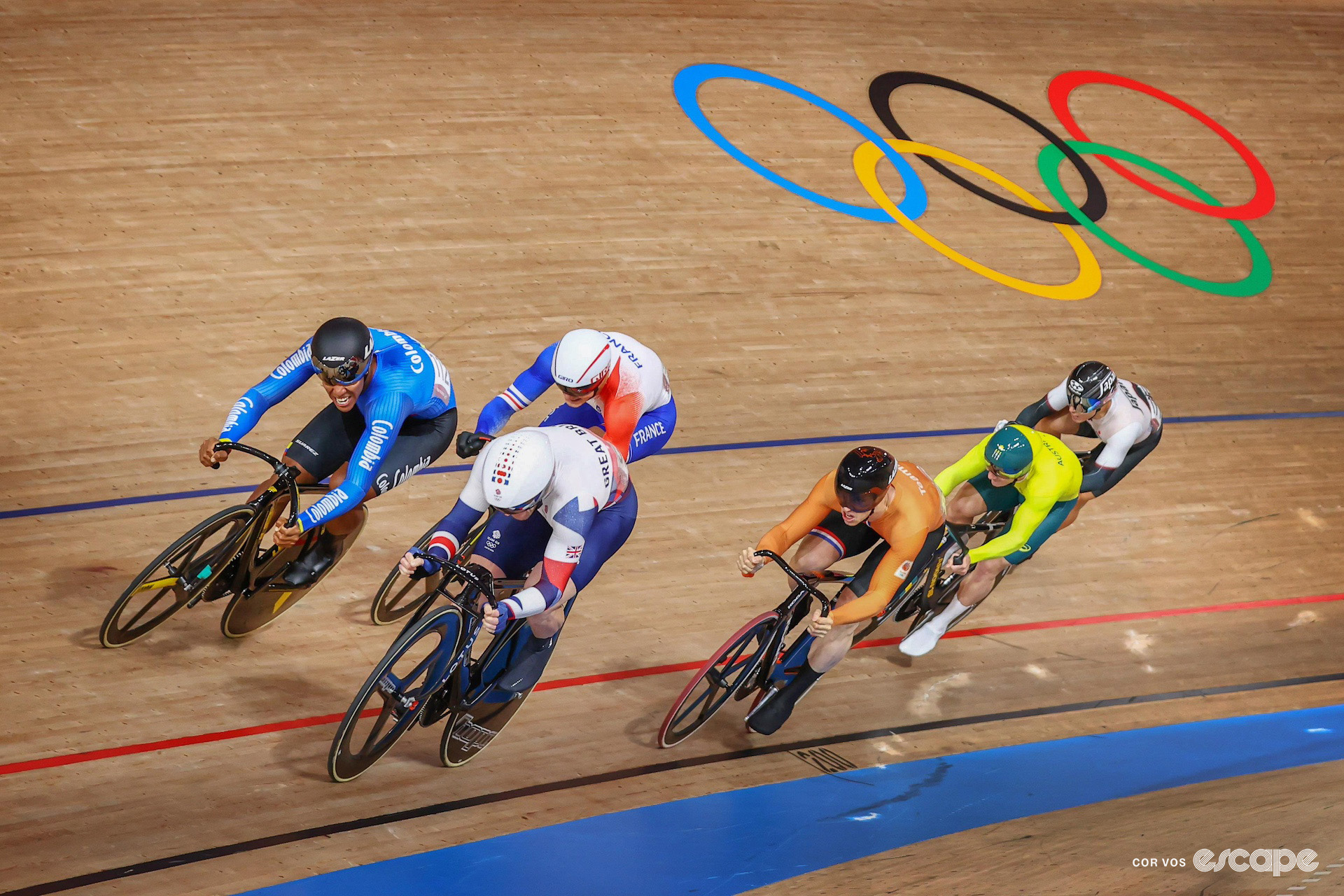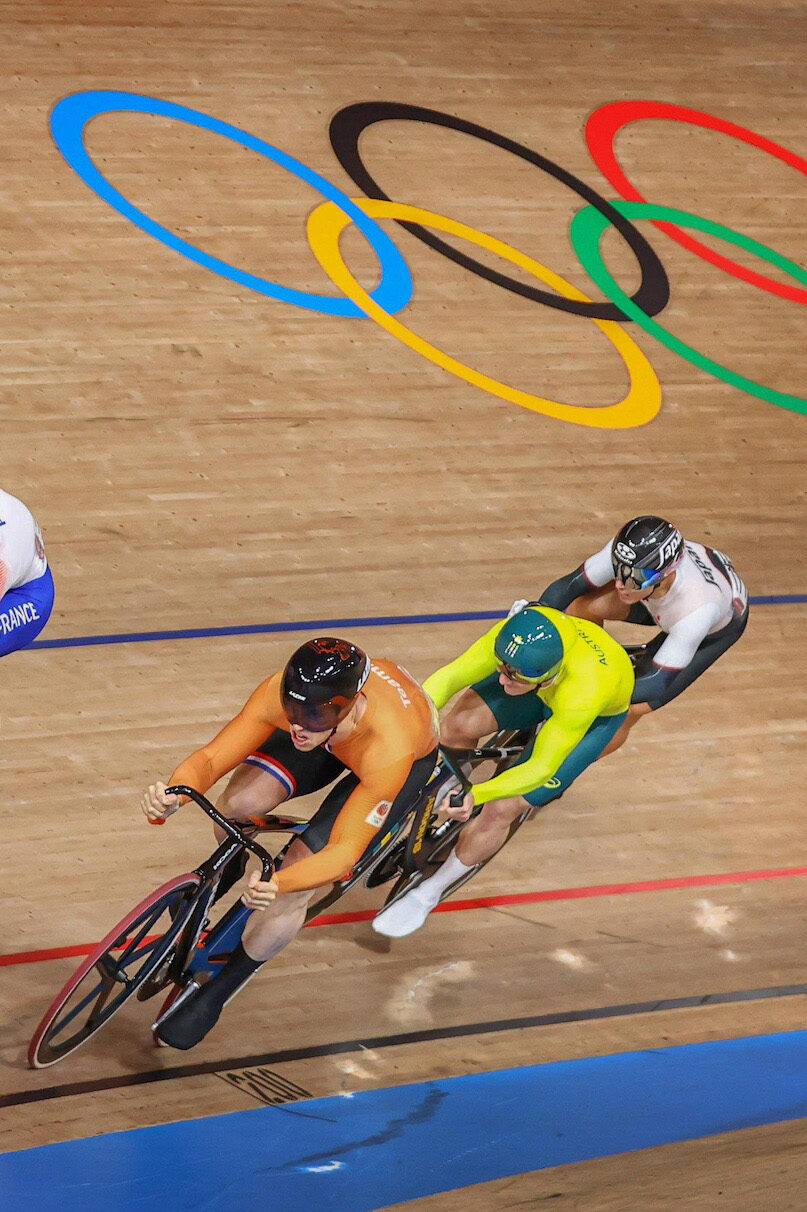Track racing is a hot favourite at the Olympic Games, but like so many of the other sports that invite new armchair experts every four years, it can be a little elusive to the newcomer who only witnesses events like the Keirin or Madison once in a blue moon.
Any diehard cycling fans reading may well be reeling in their raised eyebrows right about now given track cycling’s often close relationship with road, but it’s not as mainstream as the already pretty niche “road cycling.” We’ve included schedule information for the already in-the-know, but most of this explainer is for those needing a refresher.
The track: though velodrome tracks can vary in length, the UCI and Olympic standard is 250 metres of wooden banking in a slightly flattened oval shape – two steep 180° curves joined by two short straights – with the finish line near the end of one of the straights. There are a series of markings on the track besides the finish line(s), including the côte d’azur which marks the edge of the racing track, the black ‘measurement line’ to define the fastest route (and the length), the red ‘sprinter’s line’ and the blue ‘stayer’s line’ halfway up the boards.
The bikes: track bikes can range in look from aero road bikes to wacky heavily engineered sci-fi machines that look as dangerous as they do fast. One thing they all have in common though, is that a track bike has no brakes, and no freehub either. If the bike is moving, the pedals turn, and it’s up to the resistance in the rider’s legs to slow the forward momentum.
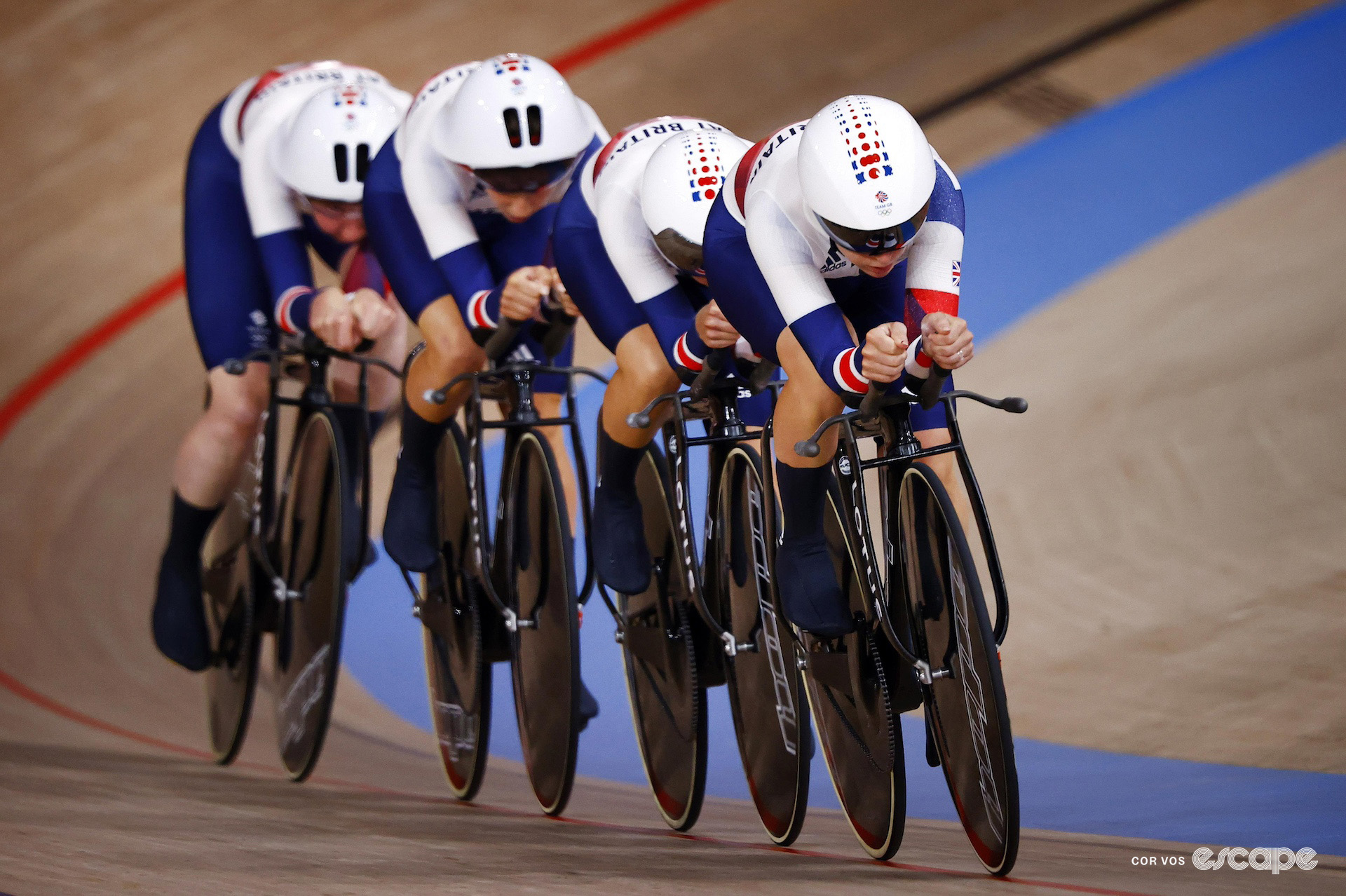
Track cycling is separated into two categories or formats: sprint and endurance. These two strands might not look or sound too distinct at first, but they are not interchangeable, not without years of adaptation for the athletes – you just have to stand, say, Matt Richardson next to Dan Bigham, or Mathilde Gros next to Elinor Barker, to identify the quite different physical requirements of each.
The sprint events are short and fast, often very fast, with opportunities for both individual and team medals. Endurance events – you guessed it – tend to last a lot longer, and while both invite tactical mastery, the latter typically have a little more going on on that front, though it does vary from one event to the next. You’re also going to see a lot of familiar names from road cycling on the endurance side, while the sprinters are far more specialised.
There are a few more events besides those competed at the Olympics, like for instance the individual pursuit, but we’ll focus on the following, starting with the sprint events. All times listed are local (Paris) time, are estimated and may change slightly, and are for finals only. Here’s the full schedule with qualifying rounds.
Sprint events
Individual (Match) sprint
Raced one on one in best-of-three match sprints, two competitors line up alongside one another in a standing start before embarking on three laps of the track with only the last 200 metres being timed. The winners proceed directly into the next round, while the losers get a second chance to advance via the repechage.
It’s not unusual for the riders to start off very very slow, even coming to a track stand as the pair descend into an elaborate game of chicken to force the other into the disadvantaged front position. The foremost rider will peer over their shoulder for any signs of a move from their rival – and then it’s hell for leather to the line. While often it is just a case of the fastest coming out on top, the more evenly matched pairings will have to call on their tactical playbooks to get the better of their opposition.
Finals
Friday, August 9 – men – 18:00 CET
Sunday, August 11 – women – 12:45 CET

Team sprint
Raced by two teams of three in what is basically the shortest possible team time trial. The teams start on opposite sides of the track and complete three laps, one rider leading each one, with the time taken as the last rider crosses the line. It’s about as fast and furious as it gets, the sheer strength displayed in the standing start giving way to a spectacle of speed that’s over in less than a minute.
Finals
Monday, August 5 – women – 19:46 CET
Tuesday, August 6 – men – 19:55 CET
Keirin
Conceived in Japan and literally translated as “racing cycle,” the Keirin is contested by six riders at a time after a controlled start behind a derny (once – not as long ago as you might think! – powered by petrol, but now electric). The riders complete three laps behind the pacer – lifting the speed steadily from 30 to 50 km/h – after which the derny peels off onto the apron and the race is on.
Though the riders are already pedalling along at a fair old clip, the Keirin can look a bit like the individual sprint, albeit with many more riders, in that all must have their heads on a swivel. Keirin is basically a contact sport (in Japan riders even wear padding), and crashes can be wicked as riders vie for position. There are multiple heats for qualifying (six riders each, top two advance) including repechages, or last-chance qualifiers, and then quarterfinal, semifinal and final (medal) rounds. It’s worth watching more than just the final round of the Keirin in order to get a taste of the tactics available to the competitors hoping to progress.
Finals
Thursday, August 8 – women – 19:01 CET
Sunday, August 11 – men 13:23 CET
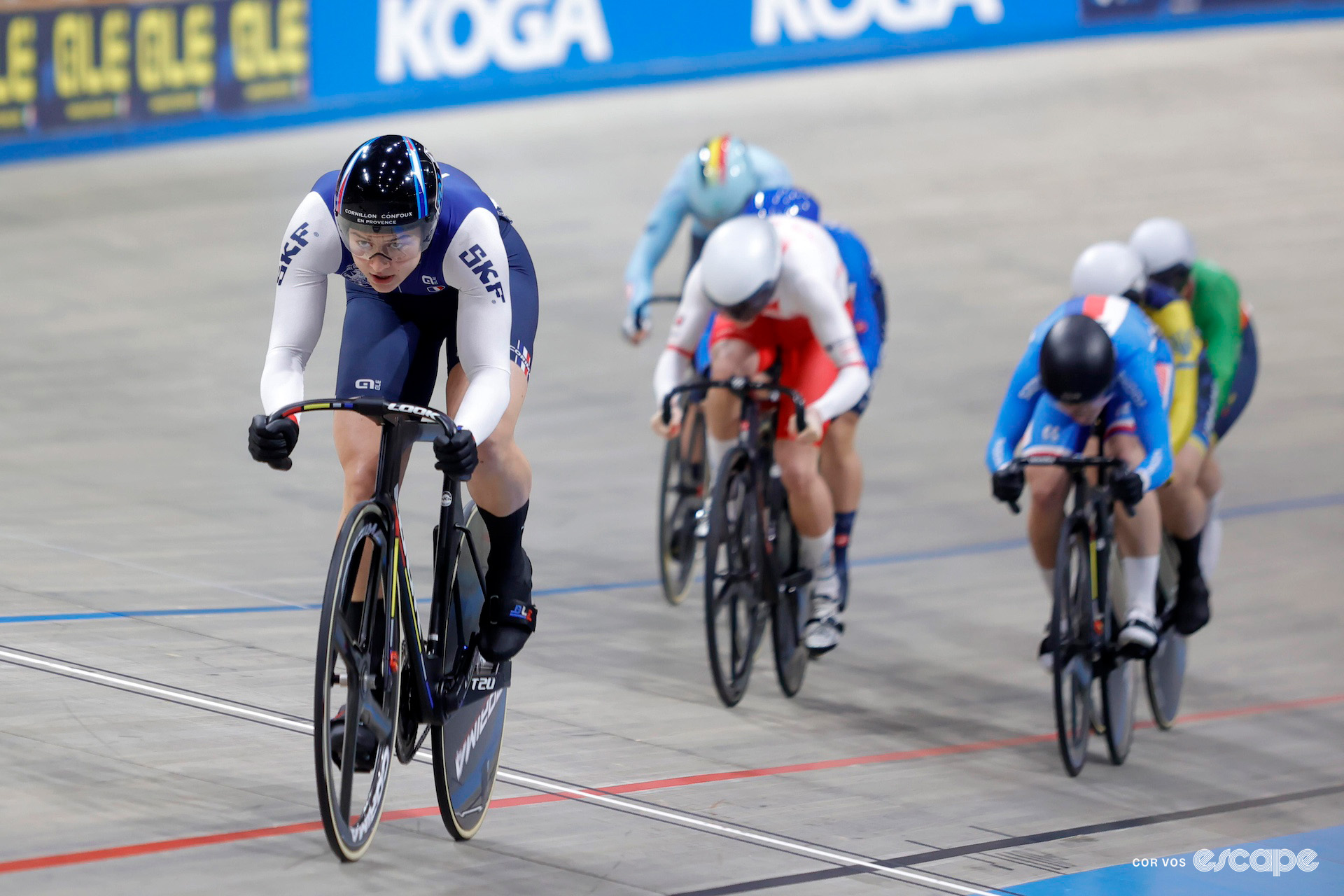
Riders to watch
Top women sprinters to look out for at the Paris Olympics include home heroes Mathilde Gros and Marie Divine Kouame, Canada’s reigning Olympic sprint champion Kelsey Mitchell, Colombian superstar Martha Bayona, reigning world sprint champion Emma Finucane for Great Britain, and the powerhouse German team of Emma Hinze, Pauline Grabosch and Lea Sophie Friedrich.
On the men’s side, the man to beat is multiple world champion Harrie Lavreysen from the Netherlands. One of the 27-year-old’s key rivals will be Australia’s Matthew Richardson with whom Lavreysen entered a thrilling rivalry at the Track Champions League, and who formed part of the Australian sprint team that broke the Dutch domination at the 2022 World Championships (the Dutch snatched it back in 2023). Others include reigning Keirin world champ Kevin Quintero of Colombia, worlds silver medalist Nicholas Paul (Trinidad and Tobago), home favourite Rayan Helal, Great Britain’s Jack Carlin, and veteran Malaysian Mohd Azizulhasni Awang.
Endurance events
Team pursuit
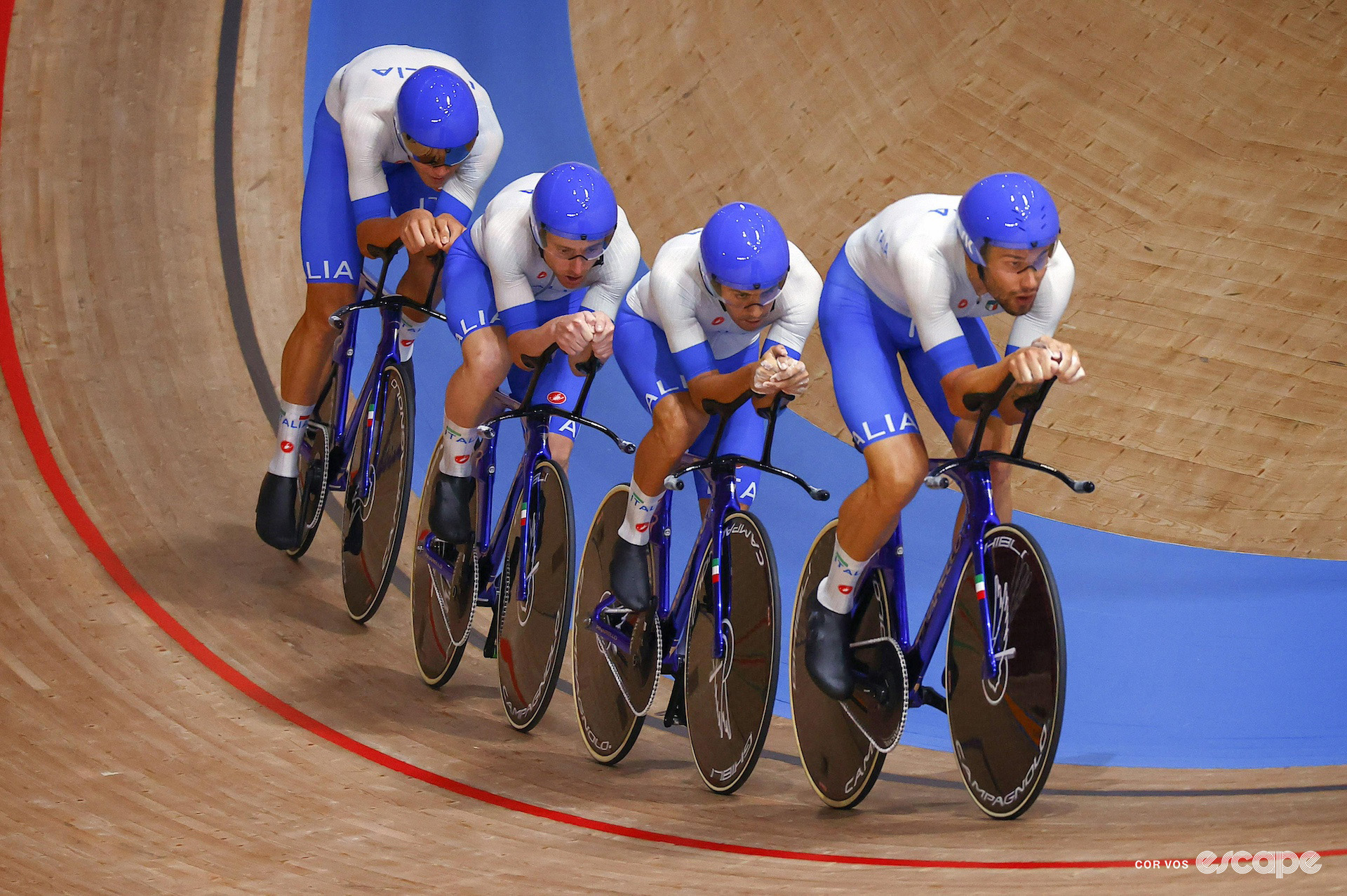
While it’s not really easy to pick out a marquee event from the track catalogue – maybe individual sprint would have a good shout – team pursuit would have a strong argument on the endurance side, though the Omnium might have something to say about it … Whichever way you look at it, the team pursuit is most certainly a big draw for road cycling fans, especially those with a keen interest in aerodynamics and ultra-refined performance.
The team pursuit is not dissimilar to the team sprint in that two teams go up against one another on either side of the track, only here it’s considerably longer at 16 laps (4 km), there are four riders, and the winning time is taken from the third to cross the line. That said, it’s not just won on speed; the second and way more dramatic way to win is to catch the opposing team – it’s all in the name.
Finals
Wednesday, August 7 – men 18:04 CET
Wednesday, August 7 – women 18:57 CET
Madison
Named after the famed Madison Square Garden events venue in New York (the original of which was one of track racing’s early hotspots), the Madison is one of the more bewildering events to land on if you’re a newcomer channel-hopping among the sports at an Olympic Games, but on the plus side, there are plenty of laps to get used to it, the distance running to 50 km over 200 laps. Raced by 16 teams of two, it’s essentially a tag team points race in which just one of the pair participates in racing for points at a time, and they can swap whenever they like with any kind of touch, but typically a fierce hand-sling.
Finals
Friday, August 9 – women – 18:09 CET
Saturday August 10 – men 17:59 CET
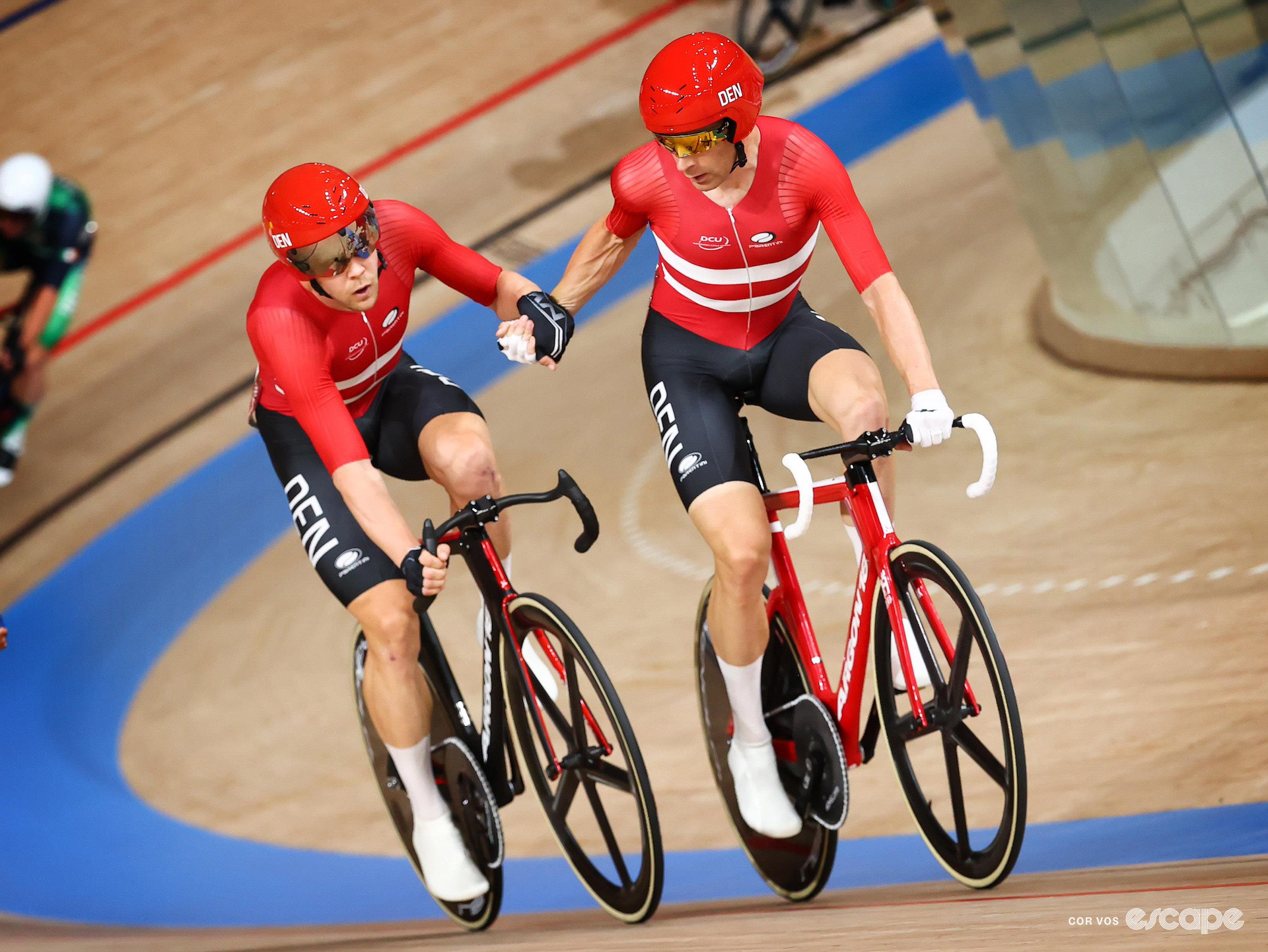
Omnium
The stage race of the track discipline, the omnium has taken on many guises over the years. In its current state, at the Olympics at least, it is a multi-race competition packed into one day (or evening), and incorporating four separate races, with points earned according to a rider’s ranking in each one (max of 40 per race except the points race where it’s possible to earn both sprint and lap points, which can make for dramatic changes in the final standings.
- Scratch: the easiest to understand; a mass start race of 40 laps or 10 km. First over the line … wins.
- Tempo: after five of 40 total laps (10 km), the winner of each lap wins a point, and you can win an additional 20 by lapping the field (which is not easy in this relatively short race).
- Elimination: in maybe the most appealing track event for spectators, one rider from the field is eliminated every two laps, i.e. the last to cross the line is out, hence the nickname ‘the devil’ as in “devil takes the hindmost”.
- Points: the longest race of the Omnium at 100 laps (25 km), points are earned in sprints every 10 laps, with double available on the final passage of the line. Like the Tempo race, you can also win 20 points by lapping the field, which is much more practical here, and you’ll often see a road racing-esque breakaway sneak away.
Omnium finals:
Thursday, August 8 – men – Scratch 17:00 CET; Tempo 17:38 CET; Elimination 18:25 CET; Points 19:27 CET
Sunday, August 11 – women – Scratch 11:00 CET; Tempo 11:57 CET; Elimination 12:53 CET; Points 13:56 CET
Riders to watch
There are a lot of road cyclists who thrive on the track, and vice versa; endurance track craft is well transferred to the road, and time trial especially. To provide the whole list would require a separate article, but the biggest names include Filippo Ganna and Jonathan Milan, themselves just half of the reigning Olympic team pursuit champions, their big rivals in the GB team including Ethan Hayter and Dan Bigham. In the men’s Omnium you’ll see Colombian Fernando Gaviria, Italian Elia Viviani, Hayter, and Australia’s Sam Welsford (also racing team pursuit), to name a few.
On the absolutely stacked women’s side, multi-disciplinary world champion Lotte Kopecky stands out, but she’s by no means unmatched with legions of familiar rivals. Americans Chloe Dygert and Kristen Faulkner will race team pursuit, as will Letizia Paternoster and Elisa Balsamo for Italy. In the Omnium, Kopecky will face off against Paternoster and Balsamo, defending Olympic champion Jennifer Valente of the USA, and New Zealand’s Ally Wollaston. Also, keep an eye out for anyone in GB or Australian livery, whether a well-known name from the road or not.

Did we do a good job with this story?
